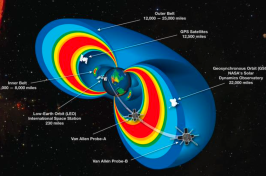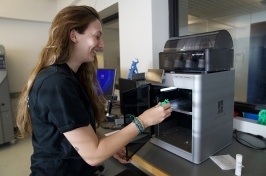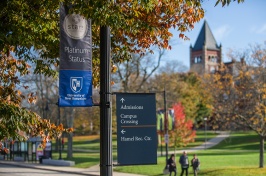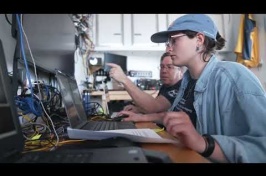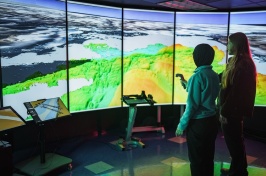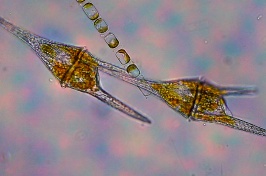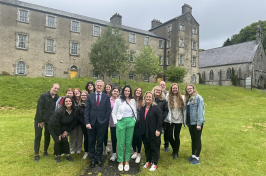The University of New Hampshire is a flagship research university that inspires innovation and transforms lives in our state, nation and world. More than 16,000 students from all 50 states and 71 countries engage with an award-winning faculty in top ranked programs in business, engineering, law, health and human services, liberal arts and the sciences across more than 200 programs of study. UNH’s research portfolio includes partnerships with NASA, NOAA, NSF and NIH, receiving more than $100 million in competitive external funding every year to further explore and define the frontiers of land, sea and space.
UNH Opens Aquaponic Greenhouse Facility to Support Local, Regional Food Production

Researchers recently grew Boston butter head lettuce in 35 days from seed to harvest and hit the magical 150g head weight using only nutrients from the fish.
Credit: UNH
DURHAM, N.H. – In an effort to support sustainable agriculture, the New Hampshire Agricultural Experiment Station at the University of New Hampshire has opened a new aquaponic greenhouse facility that aims to provide a model for integrating land-based aquaculture systems with hydroponic plant production that can be used locally and regionally to increase sustainable food production.
“Over half of the world’s seafood is produced from aquaculture,” said Todd Guerdat, assistant professor of agricultural engineering, who is leading the project at the Kingman Research Farm, an experiment station facility in Madbury. “Eighty percent of the seafood we eat in the United States is imported, resulting in nearly an annual $11 billion trade deficit for seafood alone. We need to take control of our food production systems by developing a sustainable, U.S.-based aquaculture industry.”
“Supporting sustainable agriculture in the Northeast United States requires a renewed focus on integrating agricultural production systems, such as combining recirculating aquaculture systems and hydroponic crop production. Agricultural systems become more economically viable when integrated and provide an ideal farming model that produces fish and plants for food, both locally and sustainably,” Guerdat said.
The new aquaponic research facility at the UNH Kingman Research Farm will allow scientists to evaluate hydroponic plants grown using water from a recirculating aquaculture system fertilized with nutrients from the food fed to fish. Using three identical greenhouses, researchers will develop an economically sustainable aquaponic production system design.
Specifically, scientists are investigating how to balance nutrient production from the fish and nutrient uptake by the plants, studying food safety concerns, developing integrated pest management (IPM) solutions, and optimizing the designs based on economic modeling. They plan to demonstrate the results to producers by offering hands-on workshops covering a full range of topics, including hydroponics, aquaculture, and integrated aquaponic system design and operation.
“In an age where growing, buying, and eating locally improves food security for all, food production systems that are sustainable economically and environmentally are more important than ever. Recirculating aquaculture businesses are already in use in New Hampshire and the Northeast. However, there are many questions that remain. How do you balance the fish and plant production systems? How big should each be? What are realistic production estimates for business plan development? What is the most efficient design for a recirculating aquaculture system? This research aims to answer all of these questions so anyone – a farmer or individual grower – can take the results and apply them directly to their own application,” Guerdat said.
The research project has received extensive support and interest from local restaurants and chefs, as well as those in the food retail industry. Earlier this summer, 35 executives from Ahold Delhaize, one of the world’s largest food retailer groups that includes Hannaford, Stop and Shop, and Peapod, visited the new facility while it was under construction.
“This research is key to our industry. For instance, an aquaponics facility that can produce strawberries late into the season would mean that we can ensure high quality food throughout the year. On their own, our suppliers, who are often local suppliers, do not have the capabilities to run this type of research,” said Megan Hellstedt, vice president of sustainable retailing from Ahold Delhaize.
“The fish taste fantastic,” said Lee Frank, chef at Otis in Exeter who recently served fish raised in the new UNH system to restaurant patrons.
The initial test runs for the facility are already bearing “fruit” (vegetables, fruit, and fish). Researchers met a huge milestone met in August when they hit their production goal on their first run of Boston butter head lettuce. They grew the lettuce in 35 days from seed to harvest and hit the magical 150g head weight using only nutrients from the fish.
This material is based upon work supported by the NH Agricultural Experiment Station, through joint funding of the National Institute of Food and Agriculture, U.S. Department of Agriculture, under award number 1010110, and the state of New Hampshire. This research also is supported by NH Sea Grant and the USDA Agriculture and Food Research Initiative. To learn more about some of the research being conducted at this facility, visit https://bit.ly/2NxEvs2.
Founded in 1887, the NH Agricultural Experiment Station at the UNH College of Life Sciences and Agriculture is UNH’s original research center and an elemental component of New Hampshire's land-grant university heritage and mission.
EDITORS AND REPORTERS: Dr. Todd Guerdat is available to discuss this project. You can reach him at todd.guerdat@unh.edu and 603.556.8341.
VIDEO ABOUT UNH AQUAPONICS RESEARCH
https://youtu.be/jdr32VyugbI
It’s no fish tale; fish farming can be used to help grow plants. Researchers at the University of New Hampshire are working on an aquaponics farming project that grows plants using nutrients that come from fish in a recirculating aquaponic system. The researchers, which are a part of the New Hampshire Agricultural Experiment Station at UNH, are aiming to provide a model for integrating land-based aquaculture systems with hydroponic plant production that can be used locally to increase food production.
PHOTOS AVAILABLE FOR DOWNLOAD
https://colsa.unh.edu/nhaes/sites/default/files/media/images/unhaquaponicgreenhouse.jpg
In an effort to support sustainable agriculture, the New Hampshire Agricultural Experiment Station at the University of New Hampshire has opened a new aquaponic greenhouse facility that aims to provide a model for integrating land-based aquaculture systems with hydroponic plant production that can be used locally and regionally to increase sustainable food production. Credit: Todd Guerdat/UNH
https://colsa.unh.edu/nhaes/sites/default/files/media/images/unhhydroponiclettuce.jpg
Researchers recently grew Boston butter head lettuce in 35 days from seed to harvest and hit the magical 150g head weight using only nutrients from the fish. Credit: UNH
https://colsa.unh.edu/nhaes/sites/default/files/media/images/unhaquaponics_1.jpg
Fish provide the nutrients for hydroponic crops. UNH is using tilapia, brown trout, and rainbow trout. Credit: Todd Guerdat/UNH
https://colsa.unh.edu/nhaes/sites/default/files/media/images/unhhydroponicstudents.jpg
Scientists are investigating how to balance nutrient production from the fish and nutrient uptake by the plants, studying food safety concerns, developing integrated pest management (IPM) solutions, and optimizing the aquaponic designs based on economic modeling. Credit: Todd Guerdat/UNH
-
Media Contact
Lori Tyler Gula, PhD | NH Agricultural Experiment Station | lori.gula@unh.edu | 603-862-1452
Latest News
-
March 12, 2025
-
February 19, 2025
-
February 6, 2025
-
February 5, 2025
-
January 15, 2025










